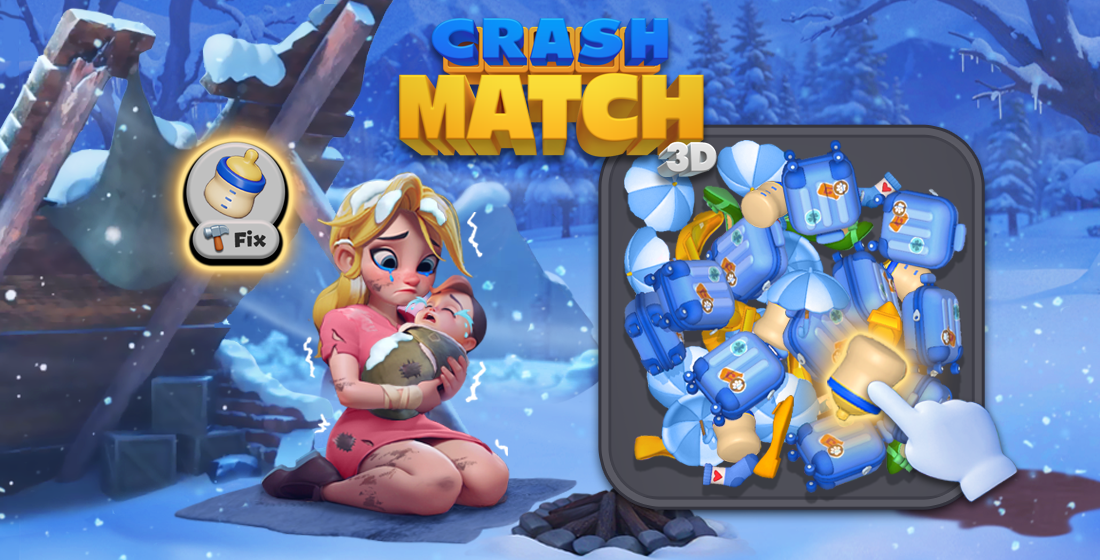Best Indie Building Games for 2024: Hidden Gems to Explore
When it comes to creativity, few gaming genres rival the depth of building games. Especially within the indie space, developers are taking risks—designing immersive worlds where players can craft, grow, and shape realities from the ground up. This year, 2024, brings a fresh crop of under-the-radar titles that are already capturing attention across Steam and itch.io.
Sure, we all know about big releases. EA Sports FC 24 might've had its initial release date dominate headlines. But dig a little deeper—past the flashy trailers and polished graphics—and you’ll find a quietly booming scene of inventive, often whimsical, indie building experiences. And let’s not overlook the rise of niche genres like steampunk rpg games, where world-building and lore intertwine with mechanics in surprisingly poetic ways.
This deep dive uncovers the most engaging indie games that put creation at the forefront. Some are pixel-perfect throwbacks; others feel like something straight out of a 19th-century engineer’s fever dream.
The Quiet Revolution in Indie Development
Budgets? Minimal. Team sizes? Often solo. Impact? Massive. Indie devs aren't trying to outdo the triple-A giants on graphics or scale. Instead, they’re winning through originality. A building game released by a two-person team in Helsinki can charm players more than a 500-million-dollar production.
The core of these experiences isn’t realism or competition. It’s about freedom. The player chooses how things should look, feel, and evolve. No one is yelling “Achievement unlocked" every 90 seconds. The joy is in the process.
Niche Genres on the Rise: Why Steampunk Still Captivates
One of the more persistent subgenres floating around building games today involves steam-powered dreams: think brass fittings, whirling gears, floating cities, and top hats. Steampunk rpg games tap into a very particular imagination—one fueled by alternate 1800s histories and Jules Verne fantasies.
What makes steampunk appealing for world-builders is its built-in design language. When crafting a town in a steampunk setting, the aesthetic tells you what fits and what doesn’t. Wood, steel, and pipes become the default palette. The rules are clear—but also full of charm.
- Games set in steampunk worlds offer cohesive architecture systems
- The retro-futurist vibe makes upgrades feel magical and industrial at once
- Role-playing layers add emotional investment to every structure built
This isn't about mimicking modern cities. It’s about constructing a vision where progress and whimsy collide. One dev in Prague mentioned how her team was inspired by “the idea that you could invent a flying city just by bolting more turbines to the roof." And honestly? That’s the heart of it.
Craft and Community: The Human Core of Indie Creations
If a major publisher launches a city-builder, they're looking at analytics, KPIs, user retention graphs. If an indie dev launches one, they’re probably responding to an email from a 72-year-old player in Zagreb who says, “This game helped me pass the nights after retirement."
Many of these games foster communities not through leaderboards, but through shared stories. One standout example, Fellwood Manor, has players building abandoned countryside estates in post-war Eastern Europe—only to slowly reveal family tragedies hidden within each room’s blueprint. You don’t score points for perfect symmetry. You “earn" closure.
In this space, building games become emotional journeys. You're not just stacking walls—you're constructing memories.
Tech Meets Art: How Low-Fi Tools Fuel Big Ideas
It’s fascinating what today’s engines—like Godot or LÖVE—allow creators to do on a coffee budget. One Slovenian developer spent under $300 making a procedural valley where players build aqueducts powered by wind, sunlight, and songbirds.
Seriously—songbirds. Tune a music box, certain birds appear, flapping turbines. It shouldn’t work. But it does. That's the power of constraints: when you can't do everything, you end up doing something unforgettable.
Unlike polished giants that hide their code behind layers of DRM, many indie games are transparent. Players download, modify, reskin, re-soundtrack. The game becomes a starting point—a template of inspiration.
Top Hidden Gem Building Games of 2024 (So Far)
Below is a table of underrated builders pushing creative boundaries:
| Title | Style / Theme | Notable Feature | Platform | Ease of Access |
|---|---|---|---|---|
| Clankvale | Steampunk city builder | Gravity-powered trains and lift towers | PC, Mac | Steam Early Access |
| Mist Hollow | Island farm & village life | No time mechanics—just growth and decay | PC | itch.io |
| Towerfolk: The Forge Years | Cooperative crafting RPG | Shared construction with persistent server hubs | Linux, PC | GOG & itch.io |
| The Glass Forge | Nanotech building simulator | Craft sentient glass creatures that talk to you | PC | Steam Early Access |
| Airship Syndicate | Steampunk airfleet manager | Hire AI crew with personalities and trauma | PC, macOS | GOG Exclusive |
These games don’t need the spotlight. But when they find their audience, loyalty blooms fast. Players don’t just “complete" them—they return, again and again, like visiting old homes.
Beyond Cities: Unusual Applications of Building Systems
We often assume building games are about homes, villages, or skyscrapers. But some 2024 indies are applying those systems to far wilder ends:
- Biome Engineers: Rebuild ecosystems in toxic deserts by arranging flora that clean the soil
- Social Infrastructure: Design schools, transit systems in a crumbling town with budget anxiety mechanics
- Mental Sanctuaries: A game where you build a house reflecting your psychological state—one room per memory
- Astro-Barns: Farm in zero-g on asteroid colonies, requiring careful structural balance to avoid rotation crashes
One Bulgarian-made title, Silent Loom, has you weaving soundscapes using architecture. Build a tower right, and it hums like a cello. A marketplace generates a rhythm based on citizen movement. The player is both architect and composer.
Global Influences, Local Designs
What sets 2024 apart is geography. Earlier indie builds often mimicked American suburbia or generic Euro-cities. Now, we see real regional textures:
You might build a stilt village in coastal Dalmatia—where tide changes affect foundation strength. Or assemble rooftop solar farms in Belgrade's heat dome. One Lithuanian title lets you reforest abandoned collective farms from the Soviet era. The building is technical, sure. But the history behind every field adds gravity.
Croatia, too, is quietly shaping the scene. An emerging developer out of Split is crafting Coral Keeps, a city-builder where you grow homes from genetically modified reef coral. Salinity levels change over seasons, and architecture evolves like a living organism. The project has no voice acting—just ambient wave echoes and seagulls.
The Role of Nostalgia—But Reimagined
Sure, some indie builders trade on nostalgia. The pixel grain, chiptune music, top-down perspective. Feels like 1998? Maybe. But there’s more than mere retro style at work.
These games often reframe what it meant to “build" back then. Older games lacked consequences. Now? That barn you built? It ages. The mayor might condemn it in ten years if no repairs are made. The villagers grow fond of it—or bitter if it blocks the sunset view. Building becomes political.
Indie games are finally treating the act of construction as layered: technical, aesthetic, and emotional.
The Misdirection of Hype—EA Sports FC 24 Is Not the Story
No one’s denying that the EA Sports FC 24 initial release date caused massive social buzz. Trailers everywhere. Twitch countdowns. Pre-download queues. But outside that noise—beyond the corporate hype machine—something different is building momentum.
You won’t see ads for *Mist Hollow* on national television. You won’t get free copies bundled with headphones. Yet thousands are quietly downloading, building, and connecting. One player even printed out floorplans from a save file and hung them in their living room “because it looked like a home we once had."
Big titles entertain. But the little ones, the indies? They sometimes change how we feel about creation itself.
Pick a Tool, Not a Trend: How to Start Exploring
If you're overwhelmed—don’t download everything at once. Focus. Ask:
- What style speaks to me? Industrial? Rustic? Steampunk rpg games style?
- Do I want collaboration, or solitude?
- Is it the act of placing a wall that gives joy—or the long-term story behind it?
You don’t need VR, or a high-end GPU. Many indie building titles run beautifully on a five-year-old laptop. They value idea density, not polygon count.
Browse itch.io tags like “#low-stress-building" or “#hand-crafted-aesthetic." Sort by local recommendations—if you’re in Croatia, set your geo-filter to see Eastern Europe’s rising indie wave. You’ll find titles not pushed by algorithms, but by love.
Key Takeaways Before You Click “Download"
Before you dive in, here’s what to remember:
✔ Authenticity over gloss. These games are rough around the edges—intentionally. That's not lack of polish. It's character.
✔ Small scope, high soul. Most won’t have 200 hours of gameplay. But the 10 hours they offer? They’ll stay with you.
✔ Community matters. Join Discord channels. Talk to the dev. Suggest things. In indies, your voice isn’t noise—it’s part of development.
✔ You’re not just playing. You’re authoring. Every structure, path, or machine tells a micro-story only you know.
Don’t wait for the metacritic rating. The joy of indie building games lies in discovery, not validation.
Conclusion: Building More Than Worlds
In the end, the best indie building games of 2024 do more than entertain. They offer refuge. Connection. Reflection. They remind us that structure is not just beams and mortar—but memories and meaning.
It doesn’t matter if the EA Sports FC 24 initial release date stole headlines. While stadiums and rankings flash by, quieter things grow in the margins: villages, airships, dream houses, even emotional catharsis—layer by layer, brick by virtual brick.
Building games may have started as digital LEGO. But in the indie sphere of 2024, they’ve become journals, heirlooms, and quiet revolutions.
So grab a tool. Place a foundation. Maybe build something small. It won’t make the news. But it just might rebuild you.



